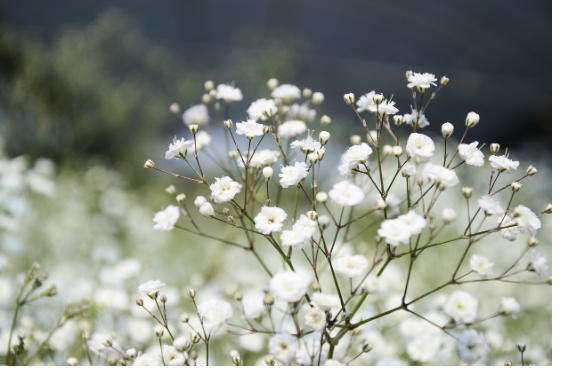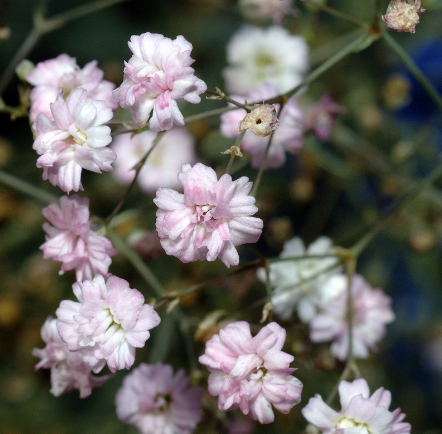Invasive Species of the midwest: A Soil Sci 101 Project
Baby's Breath
An invasive plant species located in the Midwest that is characterized by its very small five-petaled light pink or white flowers and sage green leaves.

Overview
Baby’s breath is an invasive plant species located in the Midwest that is characterized by its very small five-petaled light pink or white flowers and sage green leaves. There are over 150 different species, many of which can grow to be about 20 inches tall (“Baby's Breath” [Habitatmatters]). Baby’s breath is most commonly used in rock gardens and floral arrangements due to its delicate and elegant appearance. Due to its small size and lightweight, the mature plant is easily broken off from its roots due to wind and other environmental forces, allowing it to travel long distances. In doing so, one Baby’s breath plant is able to spread its almost 10,000 seeds across a vast landscape (“Baby's Breath” [Habitatmatters]).
Origin and Population:
Baby’s breath is native to both Asia and Europe but was brought to North America in the 1800’s as a garden ornamental. It is now commonly found across the northern United States as well as Canada (“Baby's Breath” [Invasive Species Council]). There has been a steady decline in the population of Baby’s breath in Canada due to heavy grazing and herbicides which have prevented the growth of new seedlings. Due to the drier climate of the Midwest, Baby’s breath is most typically found in hardiness zones 3-9 in the United States. These zones include states such as Wisconsin, Michigan, Iowa, and Illinois (USDA Plant Hardiness Zone Map).


Impact on the Environment:
Due to its vast number of seeds and ability to travel immense distances, Baby’s breath is able to outcompete native plants such as wormwood or pitcher’s thistle by greatly reducing the amount of nutrients available in the soil (Baby’s-Breath Gypsophila Paniculata L.). Along with this, baby’s breath attracts numerous pollinators, such as bees, due to its large amount of flowers and bright colors, which unfortunately furthers the spread of this invasive species. Not only do these native plants forcefully lose their habitats, but baby’s breath does act as a food source or shelter for wildlife due to its unpleasant odor and toxicity (Baby’s-Breath Gypsophila Paniculata L.).

References
“Baby's Breath.” Habitatmatters.org, https://www.habitatmatters.org/babys-breath1.html.
“Baby's Breath.” Habitatmatters.org, https://www.habitatmatters.org/babys-breath1.html#:~:text=Baby's%20breath&text=Why%20is%20it%20a%20problem,or%20habitat%20for%20native%20wildlife.
“Baby’s-Breath Gypsophila Paniculata L. - Accs.uaa.alaska.edu.” Alaska, 15 Jan. 2004, https://accs.uaa.alaska.edu/wp-content/uploads/Gypsophila_paniculata_BIO_GYPA.pdf.
“USDA Plant Hardiness Zone Map.” Home, https://planthardiness.ars.usda.gov/.